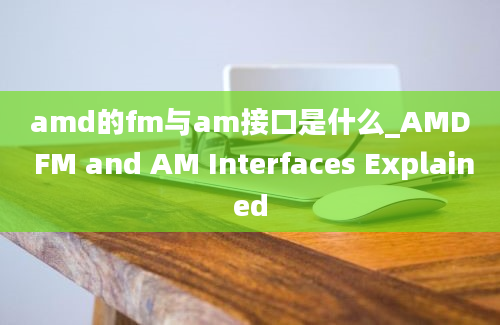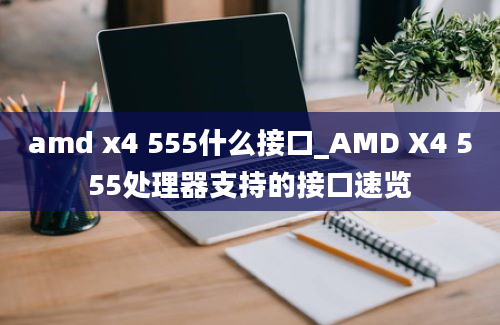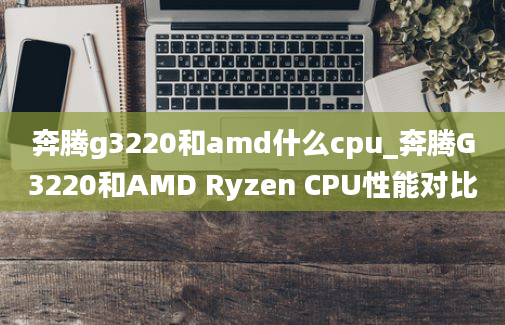AMD FM and AM Interfaces Explained
When it comes to AMD processors, you may have come across the terms FM and AM interfaces. These interfaces are crucial for connecting the processor to the motherboard and play a significant role in determining the compatibility and performance of the system. In this article, we will delve into the details of the AMD FM and AM interfaces to help you understand their functionalities and differences.
FM Interface

The FM interface, or FM socket, is commonly associated with AMD's desktop processors. It is a type of CPU socket that is used to connect the processor to the motherboard. The FM socket is designed to provide a secure and reliable connection between the CPU and the motherboard, ensuring efficient data transfer and communication between the two components.
One of the key features of the FM interface is its compatibility with specific AMD processor models. Each FM socket is designed to support a particular generation or series of processors, ensuring that the CPU fits perfectly and functions optimally within the system. This compatibility is essential for ensuring stable performance and preventing compatibility issues.
AM Interface
On the other hand, the AM interface, or AM socket, is another type of CPU socket commonly used by AMD processors. Similar to the FM interface, the AM socket is designed to connect the processor to the motherboard. However, the AM socket is typically used for AMD's high-end processors and is known for its robust design and advanced features.
The AM interface offers greater flexibility and compatibility compared to the FM socket. It is designed to support a wider range of AMD processor models, including high-performance CPUs designed for gaming, content creation, and other demanding tasks. This versatility allows users to choose from a variety of processors without having to worry about compatibility issues.
Differences Between FM and AM Interfaces
While both the FM and AM interfaces serve the same basic function of connecting the processor to the motherboard, there are some key differences between the two. One of the main differences is the target market and performance level of the processors supported by each interface.
The FM interface is typically used for mainstream desktop processors, offering a balance of performance and affordability for everyday computing tasks. In contrast, the AM interface is geared towards high-performance desktop processors, providing advanced features and technologies for demanding applications.
Another difference is the physical design of the sockets. The FM socket tends to be smaller and more compact, suitable for standard desktop configurations, while the AM socket is larger and more robust, capable of supporting high-power CPUs with advanced cooling solutions.
Conclusion
In conclusion, the AMD FM and AM interfaces play a crucial role in connecting AMD processors to motherboards and determining the compatibility and performance of the system. The FM interface is commonly used for mainstream processors, while the AM interface is geared towards high-performance CPUs. Understanding the differences between these interfaces can help users make informed decisions when choosing AMD processors for their systems.

 amd641是什么接口_amd641是什么接口?了解这个接口的功能和特性
amd641是什么接口_amd641是什么接口?了解这个接口的功能和特性 amd x4 555什么接口_AMD X4 555处理器支持的接口速览
amd x4 555什么接口_AMD X4 555处理器支持的接口速览 amd960t什么接口_AMD 960T接口技术精解
amd960t什么接口_AMD 960T接口技术精解 amd处理器配什么主板比较好_如何选择适合amd处理器的最佳主板
amd处理器配什么主板比较好_如何选择适合amd处理器的最佳主板 amd 6800配什么主板_适合AMD 6800的主板推荐
amd 6800配什么主板_适合AMD 6800的主板推荐 amdfx 6300配什么显卡_最佳选择amdfx 6300搭配哪款显卡效果最佳
amdfx 6300配什么显卡_最佳选择amdfx 6300搭配哪款显卡效果最佳 奔腾g3220和amd什么cpu_奔腾G3220和AMD Ryzen CPU性能对比
奔腾g3220和amd什么cpu_奔腾G3220和AMD Ryzen CPU性能对比 高端游戏什么amd处理器_探寻高端游戏之旅全面解析AMD处理器
高端游戏什么amd处理器_探寻高端游戏之旅全面解析AMD处理器



